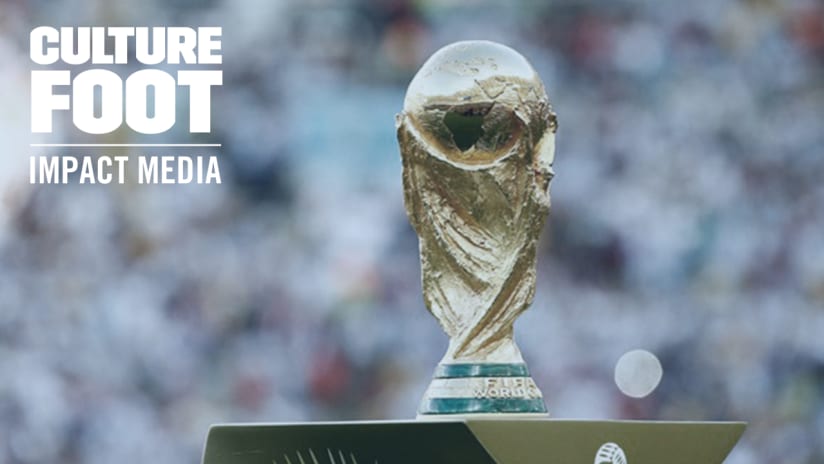32 out of 211, or about 15%. Yes, only 32 national squads will take part in the 2018 FIFA World Cup, in Russia, next summer. The qualifying process is pretty long for the national associations and lasts about two years; if it looks like a pyramid in some confederations, other regions opt for something more linear. One thing remains the same: the intensity and pride linked to wearing your country’s colours. Let’s go over the World Cup qualifying process.
Asia (AFC)
46 teams, four qualified, one intercontinental play-off place
Qualified teams: Australia, Iran, Japan, Saudi Arabia, South Korea
Four qualifying rounds determine the four countries that win their place in the world tournament and the other one that will have to cross the Pacific Ocean for a play-off. The dance starts with the 12 bottom national teams in the region that face off in a home-and-away knockout series; the second round pits the 40 remaining teams in eight groups of five, and the group winners and four best second-ranked teams go through to the next round. Then, two groups of six fight for the four direct qualifying spots, going to the top two of each group, while the teams ranked third on each side play against each other to get to the intercontinental play-off against a representative from either CONCACAF or CONMEBOL.
Africa (CAF)
54 teams, five qualified
Qualified teams: Egypt, Morocco, Nigeria, Senegal, Tunisia
In the Cradle of Mankind, three rounds are necessary to find the cream of the crop. First, the 26 worst ranked teams play each other in a home-and-away play-off to get to the second round, also a home-and-away playoff with all remaining teams involved, before the group stage. Each winner of the five groups of four teams each go through to the World Cup.
North America, Central America, Caribbean (CONCACAF)
35 teams, three qualified, one intercontinental play-off place
Qualified teams: Costa Rica, Mexico, Panama
Our confederation offers the most complicated qualifying format of all. No less than six rounds are needed to name the three or four countries that will reach Earth’s biggest sports event. It begins with a play-off between the 14 bottom teams in the region, followed by another play-off, this time between the 20 lowest ranked remaining teams, and by ANOTHER play-off, with the 10 winners of the second round and teams ranked seventh and eighth in CONCACAF. These six teams go through to the group stage. Is that clear until now? In the fourth round, three groups of four teams allow the top two of every group to get to the last group stage, the infamous “hex”, in which the best three teams get their ticket for the World Cup, while the fourth country goes to an intercontinental play-off. And breathe.
South America (CONMEBOL)
10 teams, four qualified, one intercontinental play-off place
Qualified teams: Argentina, Brazil, Colombia, Peru, Uruguay
After the most complicated, the most simple. Everybody is in the same group and plays each other once at home, once away. The top four are invited to the world tournament, while the team finishing fifth travels across the Pacific for an intercontinental play-off. The result of this format is the most exciting qualifying campaign of all, with many games pitting good teams against one another and a completely crazy race to the World Cup that often sees a favourite knocked out.
Oceania (OFC)
11 teams, none qualified, one intercontinental play-off place
Qualified teams: none
This confederation, the weakest of all – as we are writing, New Zealand is the top team in the area and ranks 122nd in the world – without insulting the paradisiac destinations of Fiji, Tahiti or Cook Islands, couples qualifying process and continental tournament. A four-team tournament determines a winner who enters the OFC Nations Cup. If this competition in itself brings glory to the champion, what we care about right now is the group stage: among the eight teams taking part, six go through to the final World Cup qualifying round – three in each group. In the third round, two groups of three countries each determine the finalists who enter a home-and-away play-off, with the winner getting a ticket for an intercontinental play-off.
Europe (UEFA)
55 teams (including Russia), 13 qualified (including Russia)
Qualified teams: Belgium, Croatia, Denmark, England, France, Germany, Iceland, Poland, Portugal, Serbia, Spain, Sweden, Switzerland
The format is simple, but remains heavily criticized. UEFA is surely the strongest confederation and this truth is reflected by the number of qualifying places given to the Europeans. However, the entry process to the World Cup is more or less dull and not very competitive, at least in the group stage. The favourites are all very well split in the nine groups of six teams each, and rarely have we seen surprises at this stage of the campaign: the nine teams that topped their group have lost six games all together In the second round, the best eight teams that finished second of their group see their name put in two hats, depending on their FIFA ranking, and the four play-off clashes are drawn.
Now, here is what we were all waiting for. The eight World Cup groups were decided on Friday morning.
Group A
Russia
Saudi Arabia
Egypt
Uruguay
Group B
Portugal
Spain
Morocco
Iran
Group C
France
Australia
Peru
Denmark
Group D
Argentina
Iceland
Croatia
Nigeria
Group E
Brazil
Switzerland
Costa Rica
Serbia
Group F
Germany
Mexico
Sweden
South Korea
Group G
Belgium
Panama
Tunisia
England
Group H
Poland
Senegal
Colombia
Japan





